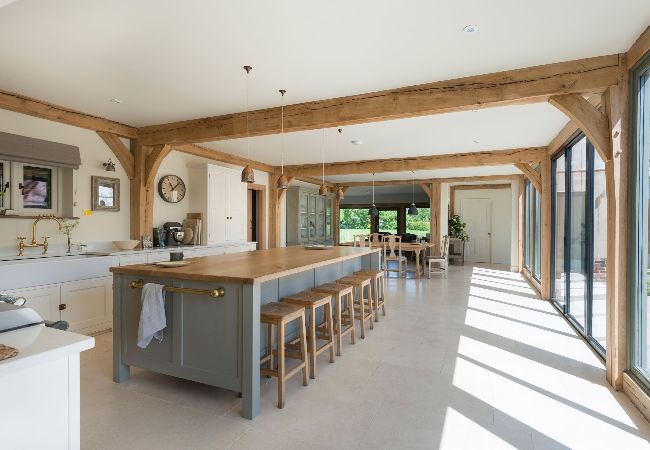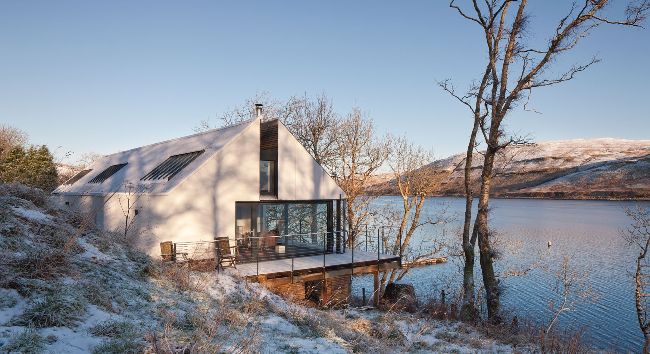Beginner’s guide to self-build

TIMELESS DESIGN Merry and Ben Albright self-built their family home with Border Oak and were careful to combine traditional styles with modern priorities in the interior spaces.
IMAGE: JEREMY PHILLIPS * HOME BUILDING & RENOVATING SELF & CUSTOM BUILD MARKET REPORT 2017
There are many benefits to building your own home. It is an opportunity to create a unique home tailored around your lifestyle. It can be a route to creating a home that will adapt as your needs change, for instance accommodating wheelchair use.
It also offers scope to build a property that is low maintenance and energy efficient.
What’s more, self-builders often achieve a larger home and garden compared to buying a new home on the open market — the average self-build project is 247m2 *, more than double the size of the average newbuild developer home. And, as an added bonus, self-builders typically enjoy a profit of 25% on their investment*.
Once you’ve decided to build your own home, there are some key questions you need to begin answering: where will you build your new home, what do you hope to build, how will you finance your project, who will build it and how will it be built, for instance. Follow our in-depth beginner’s guide to find out how to start this incredible journey…

SPLIT PERSONALITY Built on a sloping site using insulating concrete formwork, this self-build was designed to have a low-key facade facing the street but to maximise the sea views at the back.
IMAGE: DAVID BARBOUR
Pre-build essentials
Here are some of the key things you need to consider before ‘going on site’ with your build
Once you have purchased your plot there are a good number of steps you need to take before you can begin building your dream home…
DESIGNING YOUR NEW HOME
You’ll likely need a designer on board to help you formulate plans for your dream home. This might be an architect, an architectural technologist, an architectural designer or an in-house designer at a package company. The design process is likely to take at least a couple of months, possibly considerably longer. Then you’ll need to apply for planning permission…
DON’T PAY WHEN YOU DON’T NEED TO
Reclaiming VAT
One of the major benefits of building your own home is that you can reclaim VAT using HMRC’s VAT431NB form. This includes materials that are fixed into the house. The interpretation of this can be complex. For instance, you can reclaim VAT on timber flooring, but not carpet. You cannot reclaim VAT for design fees or services. You can only make one claim, so keep your VAT receipts safely in one place.
CIL exemption
The Community Infrastructure Levy (CIL) imposes a fee on the creation of new homes, which is determined by the local authority and is based on the size of the house. The good news is that, subject to certain criteria, self-builders are now exempt from paying CIL. That said, be careful to have all the paperwork in place for your exemption; each key step of the process needs to be followed to the letter to prevent CIL becoming chargeable.
APPLYING FOR PLANNING PERMISSION
The cost of submitting a planning application varies across the UK, but is currently £462 in England. However, the real cost of obtaining planning permission arguably comes from design fees to prepare plans and documents, as well as any surveys that may be required to support your application.